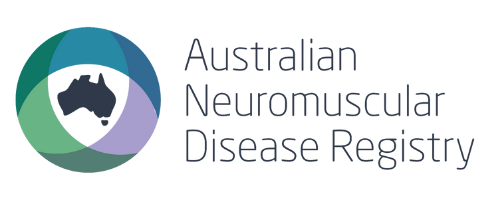Our foundation proudly bears the name of Daniel Ferguson, an individual who has courageously navigated the complexities of Limb Girdle Muscular Dystrophy Type R1 for an inspiring span of 25 years. Drawing from the same unwavering determination that has been the hallmark of his journey, Daniel has embarked on a mission to ensure that fellow individuals with LGMD can embrace lives brimming with fulfillment and joy.
Daniel has defined the Foundation’s vision as:
Enabling those living with LGMD to better control their future
Daniel was a healthy active child who enjoyed climbing trees, riding his bike and leading a normal mischievous childhood. He was diagnosed with “genetically confirmed Calpain related Limb-Girdle Muscular Dystrophy Type R1” at the age of 17.
As Daniel entered early adolescence, his general mobility declined. As the years progressed, his limbs significantly weakened and normal day to day activities became increasingly difficult. With his steady deterioration, falls became more frequent. Now, at the age of 38, Daniel is unable to climb stairs, easily stand up from a chair, sit down upon a chair, or walk long distances.
Daniel’s disability led to him losing his job as a maker of high-quality jewellery.
However, he is a determined and strong-willed person who, despite his challenges, has maintained a level of independence that allows him to live in his own home and to start up and operate his own home-based jewellery manufacturing business.
Limb-girdle muscular dystrophies (LGMD) are a group of progressive genetic disorders that are characterized by wasting (atrophy) and weakness of the voluntary muscles of the hip and shoulder areas (limb-girdle area). Muscle weakness and atrophy are progressive and may spread to affect other muscles of the body. Many different subtypes have been identified based upon abnormal changes (mutations) of certain genes.
LGMD in general and all LGMD sub-types such as LGMD R1 are known as “Rare Diseases.”
As a rare disease, there is a reduced incentive for researchers and, by extension, pharmaceutical companies to invest in the resources necessary to find a cure. In addition, there are limited numbers of clinicians and therapists who are competent and capable of looking after those living with rare diseases. Similarly, government disability funding organisations, health service providers and health insurance funds are less aware of the specific needs of people living with rare diseases and, as a result, do not effectively cater to their needs.
No cure exists for any form of LGMD.
The age of onset of LGMDs varies from subgroup to subgroup and can vary greatly even among individuals of the same family. Overall, onset is more common in childhood but it may even occur late in adult life. In most cases, childhood onset of LGMD results in a more severe disorder that progresses more rapidly than adolescent or adult-onset cases.
LGMD affects males and females in equal numbers. The prevalence of LGMD is unknown, but estimates range from one in 14,500 to one in 123,000. The most current estimate of LGMD prevalence is 1 in 43,000 which is considered to be conservative. The relative frequencies of the different types of LGMD vary from population to population.
Genetics
LGMD occurs in two basic genetic formats, Type D and Type R, which are known as autosomal dominant and autosomal recessive disorders respectively. Both formats have a large number of subgroups. Type R1 is the most common form of LGMD accounting for about 30 percent of all cases.
If both parents have one copy of the mutated gene, with each pregnancy, there is a 25 per cent chance the child will receive a faulty gene from each parent and thus be affected by the disorder. If the child inherits a faulty gene from one parent only, he or she will be an unaffected carrier of the disorder. There is a 50 percent chance that a child will be an unaffected carrier of the disorder. Autosomal recessive disorders typically appear when there is no known family history of the disorder.
Autosomal recessive disorders typically appear when there is no known family history of the disorder.
Autosomal dominant disorders typically appear when one parent has the mutated gene and will lead to a 50% chance of having an affected child with one mutated gene (dominant gene) and a 50% chance of having an unaffected child with two normal genes (recessive genes). Autosomal dominant disorders are usually associated with a family history of the disorder.
LGMD R1, which is also known as Calpain 3, LGMD 2A and LGMD R1, usually begins to affect children between the ages of 8-15, but onset ages range from 2-40 years of age. The unrelenting nature of this disease takes its victims from full mobility to a wheelchair within 10-30 years following the onset of symptoms.
Current treatment is aimed at maintaining mobility and preventing complications. However, this disorder has seen very little improvement in support and focused research over many years.
LGMD R1 attracts significantly fewer research dollars than other forms of muscular dystrophy and thus fewer researchers are working to understand the disease and discover a cure.
The Daniel Ferguson Foundation is committed to supporting all those who are living with LGMD and is the only organisation in Australia specifically focused on LGMD.
Featured Foundation Supporters and Partners




